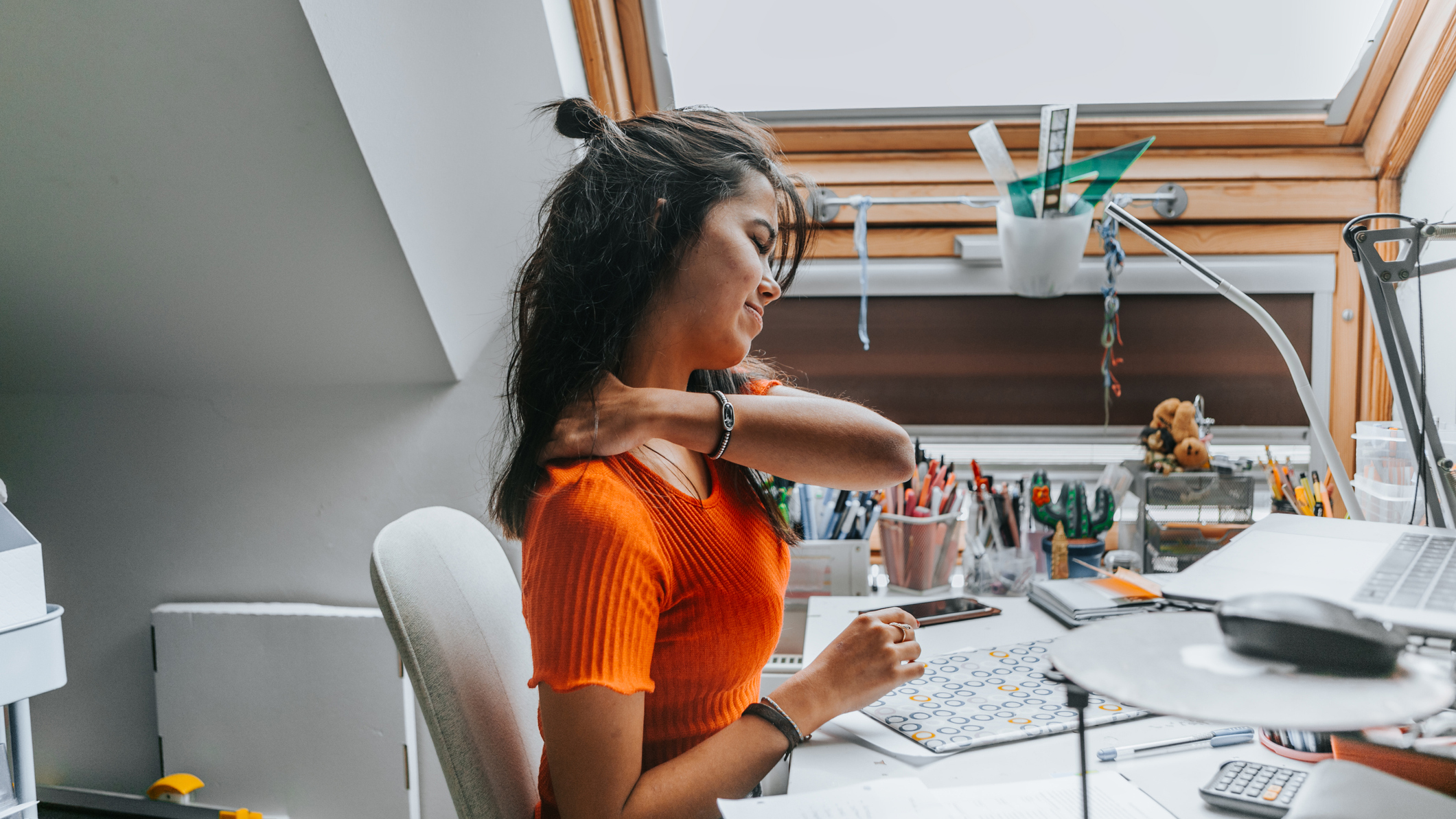How exercise can fix posture problems caused by too much desk time
Bad back, hips and shoulders? Targeted exercise can help relieve pain, according to new science


Has anything changed about you over the last 18 months? Maybe you've taken up jogging in response to the gyms being closed over the coronavirus pandemic. Maybe you've taken up a new hobby, like knitting or board games. But one thing's for sure: your back's likely to hurt a bit more than it did a year ago.
Even if you've got the best office chair, or you use one of the best posture correctors, staying inside for over a year has likely resulted in a sedentary lifestyle, which inevitably leads to increased instances of back pain, poor posture and weight gain. Researchers from Poland found a clear correlation between a sedentary lifestyle – defined as "prolonged sitting both at work and during leisure time" – is a predictor of both obesity and instances of non-specific lower back pain.
In addition, all that sitting can create poor posture, especially if we spend our time hunched over a keyboard, which is in turn linked to back pain, tension in our shoulders and neck, along with conditions such as sciatica.
So what can you do about it? A study published in the Journal of Physical Therapy Sciences found that an exercise programme stretching and strengthening the abs, head, neck and adductor (inner thigh) muscles can help see off posture problems and lower back pain. The researchers wrote: "steady exercise corrects posture, which improves the balance of the body, and relaxes the whole body, which relieves musculoskeletal pain".
The adductors are very important to exercise because you'll work towards stretching out your hips, which suffer a lot when you're sat down for hours and hours on end. The muscles shorten with lack of use, becoming less flexible. Of course, as the adductors are closely linked with our glutes and lower back, this inflexibility and muscle shortening has a knock-on effect for posture and pain.
The above video has loads of ideas for stretching out our hips and inner thighs. Lot sof the exercises above are inspired by yoga poses, which is a great way to work out. You can do more dynamic yoga flows like Vinyasa, which can improve core and leg strength and help fix lower back pain that way – but if it's hip flexion you're after, the slower, restorative practice often involves deep stretching, with poses held for minutes at a time.
Yoga also covers our lower back, stretching and arching it with moves like cat-cow and prone cobra. It's a wonderful practice for anyone suffering from back pain – all you need is to check out one of our many follow-along yoga flows, and one of the best yoga mats to get started.
Start your week with achievable workout ideas, health tips and wellbeing advice in your inbox.
Another great practice is to start picking up some heavy things. Deadlifting might sound like it's a one-way ticket to a back injury, but it works your entire posterior chain of muscles, from your legs to your back, hitting all the areas affected by bad posture. You don't even have to head to the gym – we're got a comprehensive guide on how to deadlift with dumbbells at home.
Matt Evans is an experienced health and fitness journalist and is currently Fitness and Wellbeing Editor at TechRadar, covering all things exercise and nutrition on Fit&Well's tech-focused sister site. Matt originally discovered exercise through martial arts: he holds a black belt in Karate and remains a keen runner, gym-goer, and infrequent yogi. His top fitness tip? Stretch.
